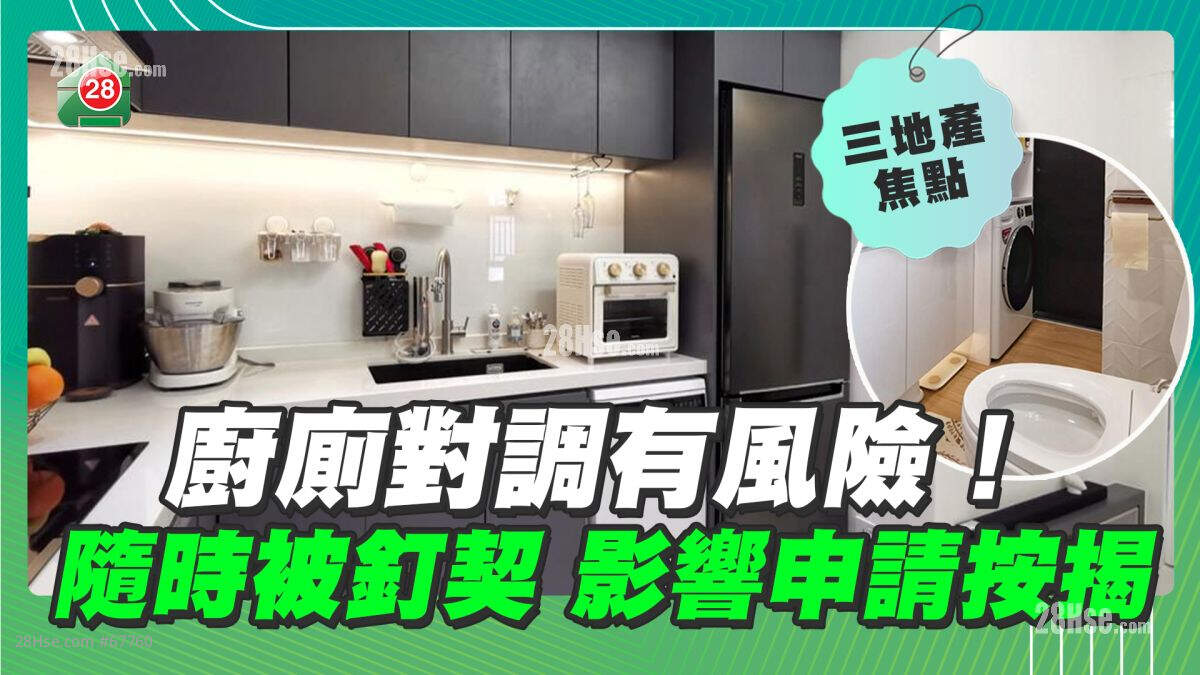In recent years, many new Home Ownership Scheme (HOS) flats have layouts where the bathroom is positioned directly opposite the entrance. From a feng shui perspective, this is considered unideal for residents’ health and finances. As a result, some homeowners choose to swap the positions of the kitchen and bathroom. But is this a feasible solution? What are the potential consequences?
Changing the layout of your home, such as swapping the kitchen and bathroom, involves structural alterations. This requires prior approval from the Buildings Department (BD). Homeowners must submit an application, including revised building plans, and receive approval before commencing any work.
Making such changes without approval is illegal. If discovered, the property could face a "Building Order" restriction, and the BD may require the owner to restore the unit to its original condition at their own expense. Therefore, prospective buyers should be cautious when viewing properties with layout modifications and confirm whether the changes were approved to avoid future complications.
Even if unapproved alterations go unnoticed by the BD, they can still affect your mortgage application. Some may wonder how banks discover layout changes, given that mortgage applications typically only require documents like the Provisional Sale and Purchase Agreement, income proof, and employment verification.
Banks don’t rely on these documents to identify layout changes. Instead, they may hire a surveyor to conduct an on-site valuation of the property. During this process, if the surveyor notices that the unit’s layout differs from the original approved floor plan, the bank could reject the mortgage application.
Not all properties are subject to on-site valuations, as this depends on the bank’s procedures and a bit of luck. However, certain types of properties are more likely to undergo inspections, such as village houses, older buildings, and housing estates with low transaction volumes. For these higher-risk properties, the chances of the bank conducting a site visit are significantly greater.
If unapproved layout changes are discovered during the valuation, will the mortgage application be outright rejected? Not necessarily. It depends on the bank’s policies and the severity of the alteration. For example, if structural walls have been altered or if the property has received a demolition order, banks are typically unable to approve the mortgage. For less severe changes that don’t involve structural risks (e.g. non-structural modifications), the bank may require the borrower to sign an undertaking. This document makes the borrower responsible for any legal or financial liabilities related to the unauthorised alterations. Once signed, the bank may proceed with a conditional mortgage approval.
Another possibility is that the bank may deduct the restoration cost from the loan amount. This means the borrower will need to pay a larger down payment. While this isn’t ideal, it’s still better than having the mortgage application rejected outright, as it reduces overall losses.
When viewing properties, always check if the layout matches the original floor plan. Ask the seller for proof of approved alterations. If you’re unsure, you can verify the unit’s approval records by visiting the Buildings Department’s online platform and entering the property’s address. By doing your homework, you can avoid financial and legal troubles and ensure a smooth mortgage application.
Like

